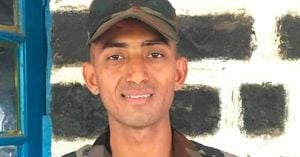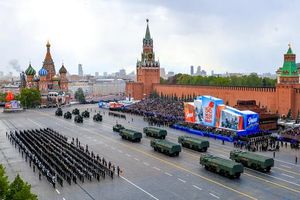In a dramatic escalation of violence in northern Mali, Tuareg rebels associated with the Permanent Strategic Framework for Peace, Security, and Development (CSP-PSD) launched a fierce assault on units of the Russian private military company Wagner Group, reportedly killing dozens of their operatives. This conflict, unfolding against a backdrop of ongoing tensions in the Sahara region, marks a significant chapter in the complex interplay of local grievances and international military involvement.
The Tuareg, a nomadic ethnic group primarily inhabiting the Sahara, have voiced longstanding dissatisfaction with the Malian government, which they perceive as neglectful and oppressive. The recent resurgence of their armed factions can be traced back to a history of insurgency that began in 2012, when they first mobilized against what they characterized as severe discrimination and marginalization by the Malian state.
According to reports from various sources, the fighting broke out around July 25 and 26 in the border town of Tinzahuaten. Rebel forces claimed they seized a substantial cache of arms, including armored vehicles and trucks, during the engagement. They also inflicted considerable losses on Wagner's troops, with estimates suggesting that approximately 20 militants from the private military company were killed in the clashes. Some Russian military blog accounts corroborated these losses, with indications that social media circulated disturbing images of the aftermath, depicting bodies of Wagner operatives alongside destroyed equipment.
The Mali military, while acknowledging some of their own losses—including two soldiers killed and ten wounded—reported inflicting significant casualties on the rebels as well. The local army stated they managed to eliminate about 20 of the insurgents during skirmishes, but it appeared the scale of the fighting swung heavily in favor of the Tuareg forces this time.
Amidst this, other reports emerged regarding the crash of a helicopter during the operations, positing that it resulted from fire during the intense exchanges. Fortunately, there were no reported casualties from that incident, demonstrating a degree of luck amid a chaotic situation.
Videos that surfaced online detailed the scene post-fighting, with some showing the aftermath as well as local reactions. The revelation of the specific involvement of Wagner Group personnel, widely known for their operations not only in Mali but across numerous African nations—including Sudan, the Central African Republic, and Libya—has heightened attention on the implications of these confrontations.
Wagner's international footprint has often been tied to controversial military and political maneuvers, which undeniably complicate diplomatic relations for Russia in regions where their forces operate. The group's presence has been justified by the Malian government as necessary for combating Islamist threats, yet the effectiveness and ethical implications of employing mercenaries in such active conflict zones continue to face scrutiny.
In the wake of the clashes, discourse surrounding the status of Wagner mercenaries has intensified within Russian media and among military commentators. The news that the command structure or personnel had sustained these casualties sparked an array of responses, particularly through Telegram channels associated with the group. Followers of the Gray Zone - a notorious news outlet linked with Wagner - expressed their grief and frustration over the loss of fighters, referencing the toll these battles are exacting on their ranks.
As this situation unfolds, the Tuareg group seems to find itself increasingly emboldened. In 2015, they had participated in a peace agreement that granted them certain concessions, but the dynamics have shifted dramatically since December 2022, when the CSP-PSD withdrew from negotiations entirely. This latest offensive could signify a renewed commitment by the Tuareg to assert their autonomy and reshape the political landscape in the region, which has remained fraught with violence and instability largely driven by extremist movements and local grievances.
The implications of these recent events transcend Mali, reverberating throughout the Sahel region where multiple armed groups operate. They highlight the persistent volatility caused, in part, by the intersection of local desires for autonomy and external military pressures. As Mali contends with ongoing challenges to its sovereignty and peace, the actions of the international community—and the strategic calculations of nations like Russia—could either exacerbate or alleviate the dire conditions on the ground.
Furthermore, it opens up discussions about the role of such private military entities in conflicts characterized by complexities that often render conventional military solutions inadequate. With Wagner's involvement entangled in both local and global military strategies, the question remains: how will regional stability fare as these dynamics evolve? The consequences of the clashes in Mali could very well dictate shifts in alliances and heighten conflicts on the broader African continent.



